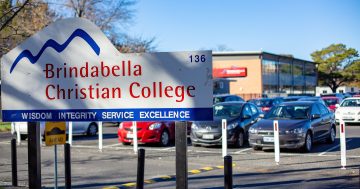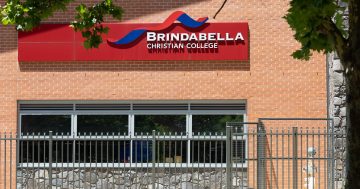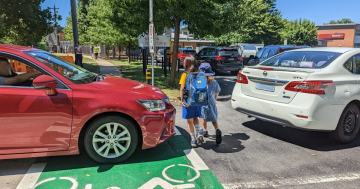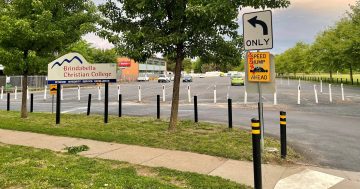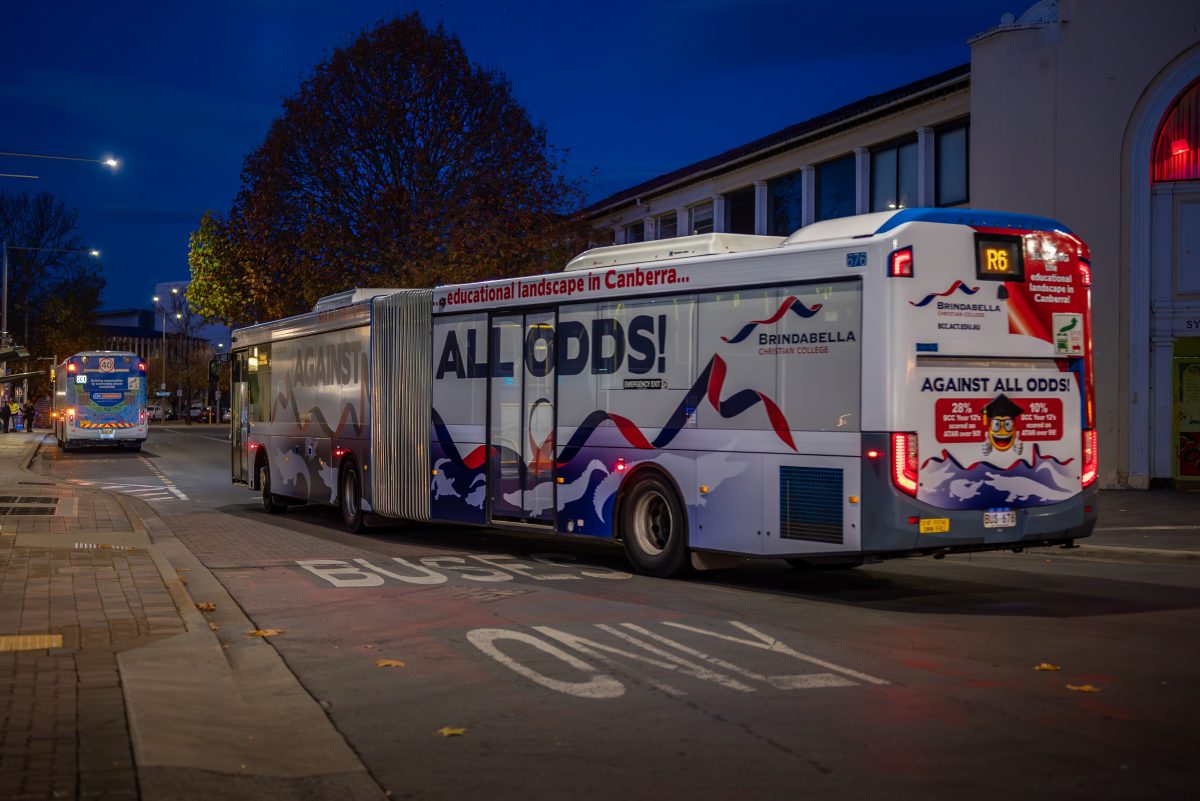
The Brindabella Christian College bus ad, ‘Against all Odds’. Photo: Brindabella Christian College (BCC).
One thing you’ll notice in Canberra after driving through other capital cities – apart from the abundance of Kathmandu puffer jackets – is a distinct lack of roadside advertising.
Except for a sneaky one mounted to the corner of the National Convention Centre in Civic and a few around the Canberra Airport, this is because billboards are banned in the ACT under a federal ordinance going back to 1937.
The National Capital Plan reads: “Commercial roadside signs are not permitted in road reservations, except on bus shelters”.
That second bit was added later, when iconic brutalist-style concrete bus shelters made way for ones with dedicated advertising spaces. The only other exception remains the buses themselves, but it turns out there are certain strict rules here too.
Brindabella Christian College (BCC) is well-known for its advertisements on Canberra’s articulated buses with characterful emojis and text along the lines of how they’re “blitzing the educational landscape”, but the northside private school recently fell foul of these rules.
The ad in question was wrapped on two articulated buses, and included the usual text but ended with “against all odds”, and a depiction of crocodile-infested waters below.
A spokesperson for the ACT Government wouldn’t comment on what specific rule the ad had broken, except to say “the advertising was in breach of the ACT Government guidelines for advertising”.
Brindabella Christian Education Limited (BCEL) board chair Greg Zwajgenberg said they were told it was “political in nature” but said the removal of the ad would “allow us to move forward with our exciting next bus campaign that will advertise the College’s new AI Robotics STEAM Centre to be created in our Norwest Campus for 2024”.
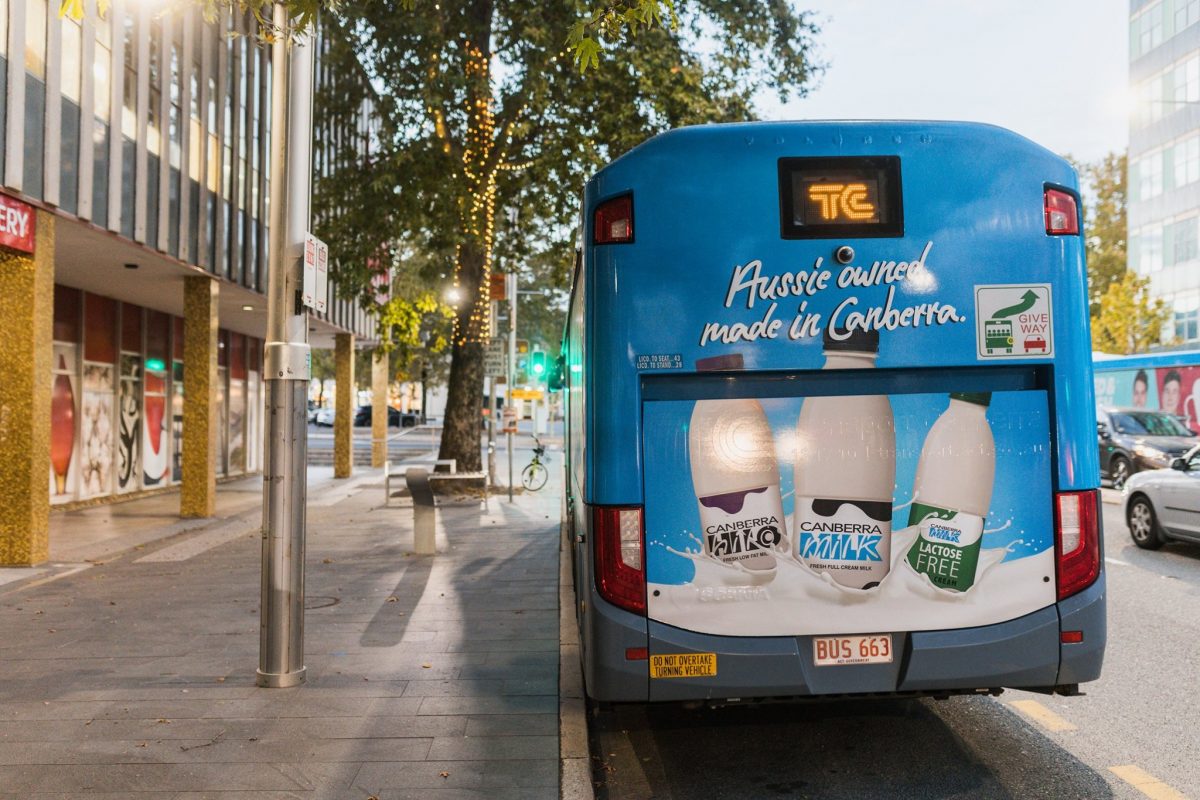
Canberra Milk ad on a Transport Canberra bus. Photo: Canberra Milk, Facebook.
Transport Canberra might look after the buses in the ACT, but the advertising is contracted through transport advertising agency Go Transit. The spokesperson said advertising must meet the Australian Advertising Standards, as well as the ACT Government’s own guidelines.
“Products and messages must be suitable and appropriate for the broader population and in line with the values of the Canberra community and ACT Government objectives,” the spokesperson told Region.
These forbid any portrayal or promotion of tobacco or tobacco products, weapons, gambling, alcohol, junk food (including fast food or unhealthy food or drinks as defined by the Australian Dietary Guidelines), fossil fuels, or high-cost, short-term credit or loans.
Political or religious advertising is also out, along with messages that “demean or discourage the use of public transport and public transport users”, “promote unacceptable behaviour to or on the transport vehicle”, “pose either a danger or confusion to traffic”, or “messages that can be deemed offensive or demeaning to specific community groups (ie religious, ethnic, women, etc)”.
Then there are “other matters, as may be determined by the ACT Government”.
“The contractors who manage advertising bookings on buses and light rail are both required to check advertising conforms according to the standards and guidelines,” the spokesperson said.
In the case of the Brindabella buses, once they “became aware” of it, Transport Canberra informed the contractor the advertising was in breach of the guidelines.
“Go Transit arranged for the removal of the advertising and provided the option for the client to supply alternate artwork to replace what was being removed,” the ACT Government spokesperson said.
Material released by the Administrative Appeals Tribunal during hearings on the state of BCC’s finances revealed it had spent up to $500,000 a year on bus advertising. It’s not hard to see how.
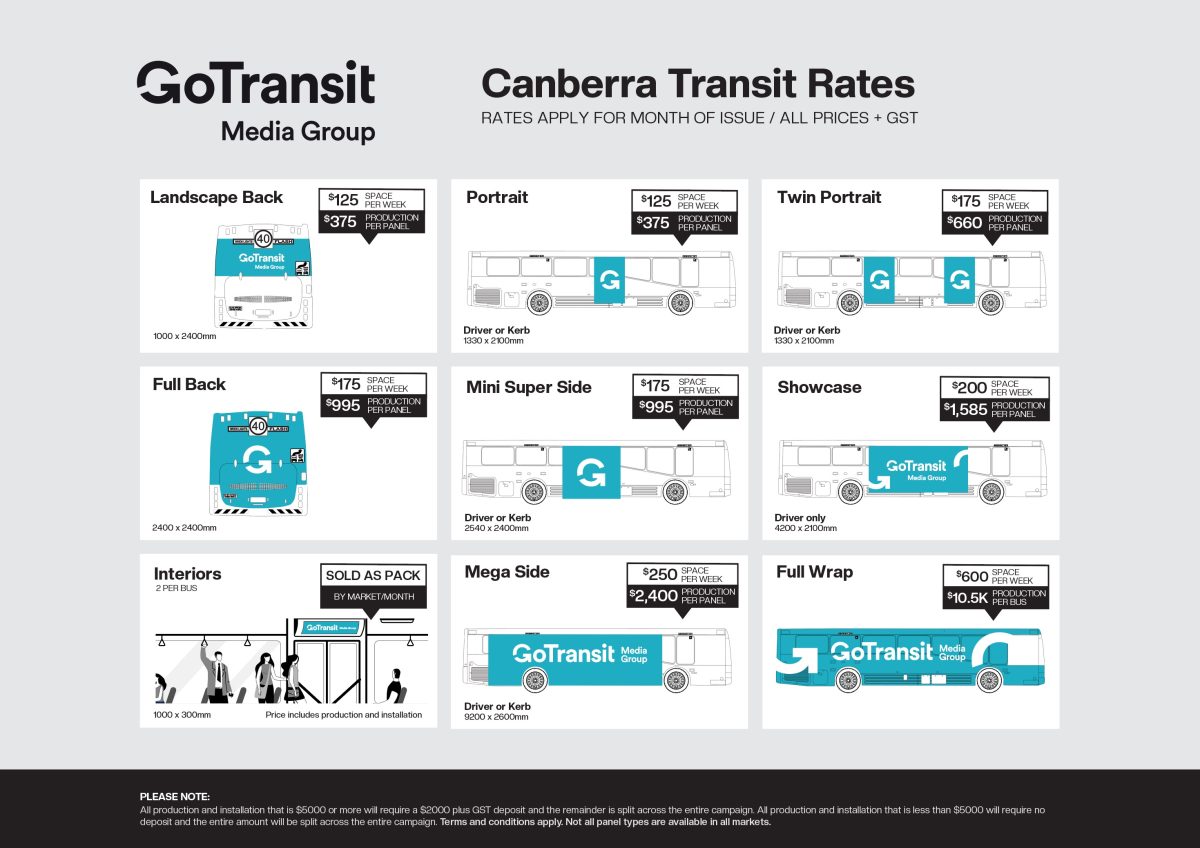
The rates for advertising on Canberra buses. Photo: ACT Government.
Go Transit offers a variety of advertising options for Canberra’s buses, with costs including upfront production and a per-week rate.
The cheapest include a 1000 x 2400 mm landscape poster on the back or a 1330 x 2100 mm portrait poster on the side, both with a $375 production cost and $125 every week thereafter.
A ‘mega side’ goes up to $2400 and $250 every week while a full wrap sits at the top, at $10,500 and $600 respectively.
Those over the $5000 mark require a deposit of $2000 plus GST, with the remaining amount split across the campaign, while those under $5000 do without the deposit.
That’s the buses. Advertising on Canberra’s light-rail vehicles is managed by another agency, Torch Media. And you might want to sit down for this …

Light rail advertising rates. Photo: ACT Government.












